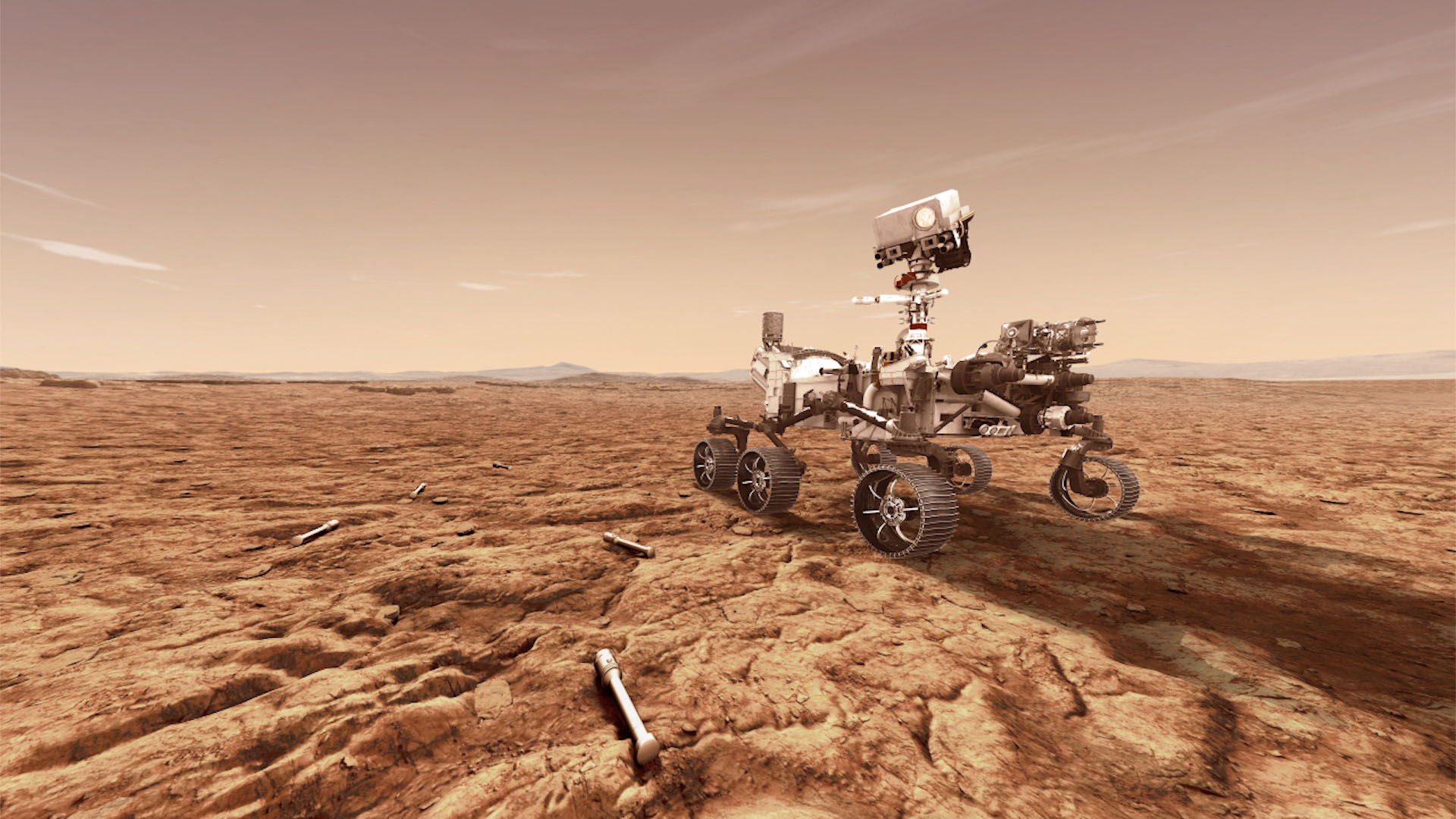
NASA's newest Mars car will touch down on the Red Planet less than 100 days from now.
The life-hunting Mars 2020 Perseverance rover, which launched on July 30, is scheduled to land inside the 28-mile-wide (45 kilometers) Jezero Crater on the afternoon of Feb. 18, 2021 — just 99 days from today (Nov. 11).
The home stretch will be busy for the car-size robot's handlers.
Related: NASA's Mars 2020 Perseverance rover mission in photos
"While we call the six-and-a-half-month trip from Earth to Mars 'cruise, I assure you there is not much croquet going on at the lido deck," mission project manager John McNamee, of NASA's Jet Propulsion Laboratory in Southern California, said in a statement.
"Between checking out the spacecraft and planning and simulating our landing and surface operations, the entire team is on the clock, working toward our exploration of Jezero Crater," McNamee said.
Perseverance — the centerpiece of NASA's $2.7 billion Mars 2020 mission — will employ the landing strategy pioneered by its predecessor, the Curiosity rover: A rocket-powered sky crane will lower Perseverance to Jezero's floor on cables, then fly off to crash-land a safe distance away.
Get the Space.com Newsletter
Breaking space news, the latest updates on rocket launches, skywatching events and more!
Perseverance will use its advanced instrument suite to hunt for signs of ancient Mars life in Jezero, which harbored a lake and river delta billions of years ago. The rover will also collect and cache samples for future return to Earth and demonstrate technologies that could aid future exploration of the Red Planet.
For example, one of Perseverance's instruments, called MOXIE (short for "Mars Oxygen In-Situ Resource Utilization Experiment"), will generate oxygen from the thin, carbon dioxide-dominated Martian atmosphere. A scaled-up version of MOXIE could help humanity get a foothold on the Red Planet, NASA officials have said. (The agency plans to launch its first crewed Mars missions in the 2030s.)
And a tiny helicopter named Ingenuity is flying to Mars on Perseverance's belly. After the rover has touched down and found a good place for the helicopter to conduct test flights, Ingenuity will detach and make a few short forays into the Martian skies — the first-ever flights by a rotorcraft on a world beyond Earth. If Ingenuity is successful, future Mars missions could employ helicopters to gather data in hard-to-reach places and serve as scouts for rovers, Ingenuity team members have said.
Two other Mars missions are also scheduled to arrive at the Red Planet in February 2021 — Hope, a weather-studying orbiter operated by the United Arab Emirates Space Agency, and China's Tianwen-1 mission. Tianwen-1 consists of an orbiter and a lander-rover duo; the surface craft are expected to touch down a few months after the mission slides into orbit around Mars.
Mike Wall is the author of "Out There" (Grand Central Publishing, 2018; illustrated by Karl Tate), a book about the search for alien life. Follow him on Twitter @michaeldwall. Follow us on Twitter @Spacedotcom or Facebook.
Join our Space Forums to keep talking space on the latest missions, night sky and more! And if you have a news tip, correction or comment, let us know at: community@space.com.

Michael Wall is a Senior Space Writer with Space.com and joined the team in 2010. He primarily covers exoplanets, spaceflight and military space, but has been known to dabble in the space art beat. His book about the search for alien life, "Out There," was published on Nov. 13, 2018. Before becoming a science writer, Michael worked as a herpetologist and wildlife biologist. He has a Ph.D. in evolutionary biology from the University of Sydney, Australia, a bachelor's degree from the University of Arizona, and a graduate certificate in science writing from the University of California, Santa Cruz. To find out what his latest project is, you can follow Michael on Twitter.









